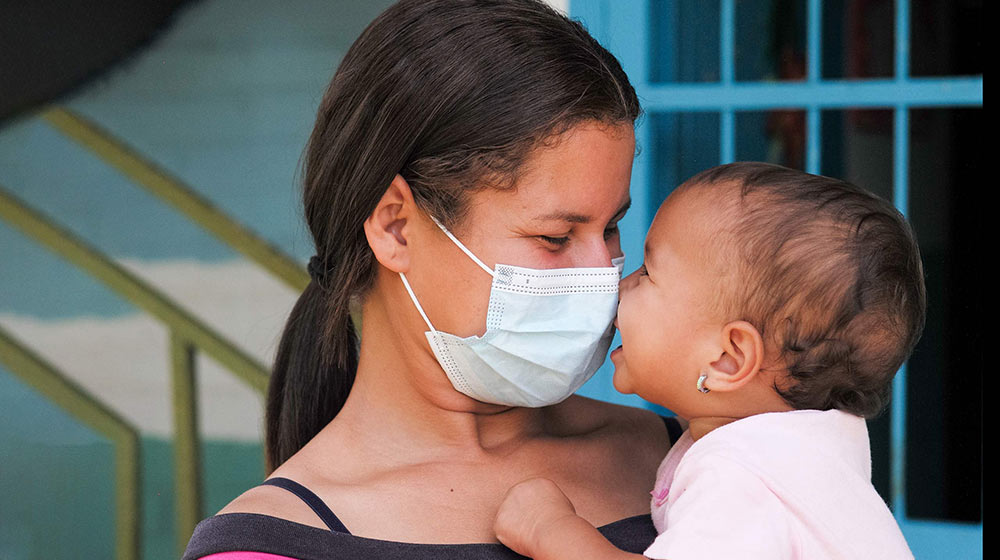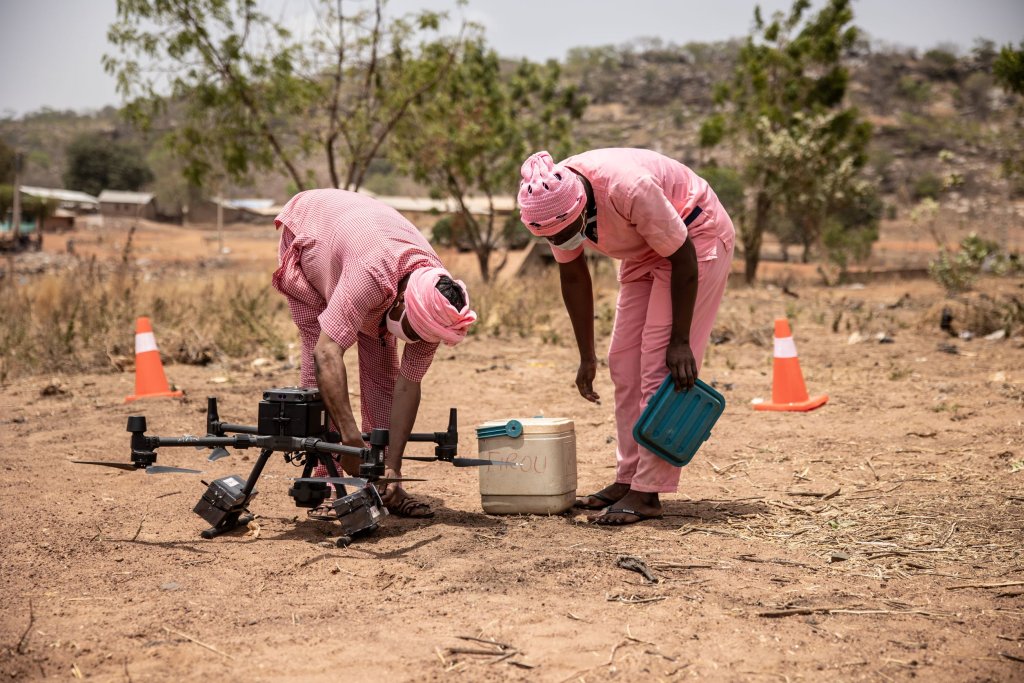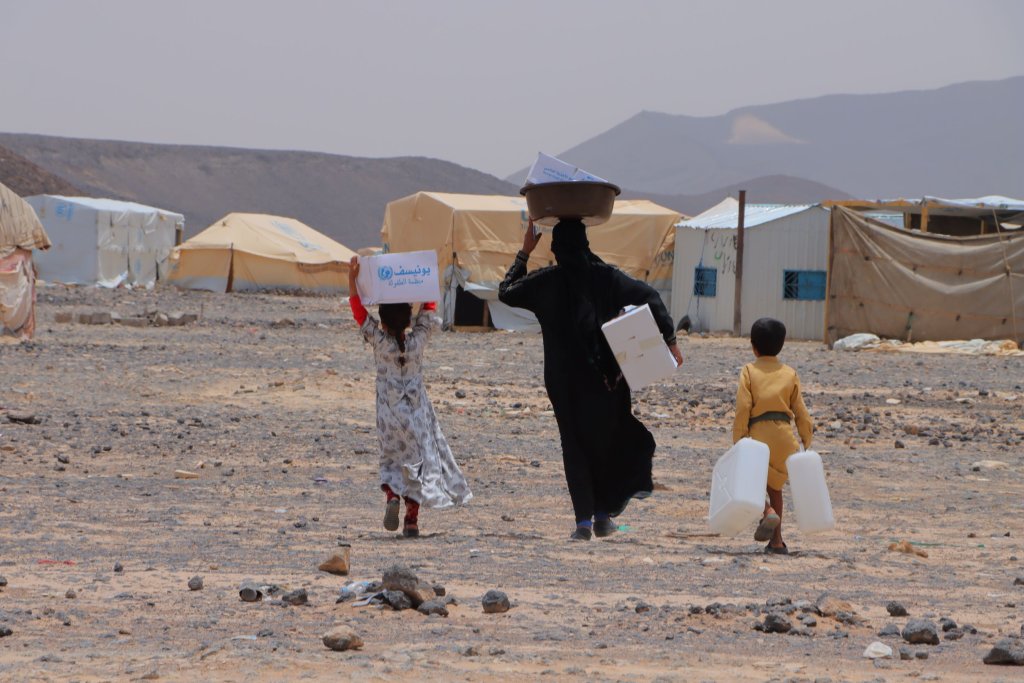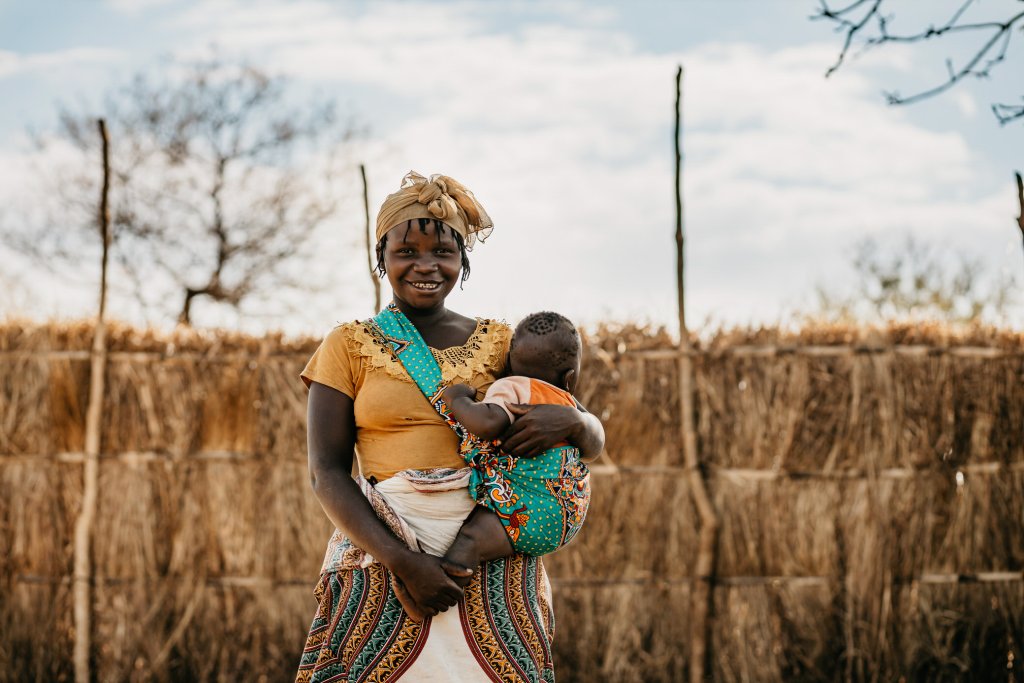2021 in Review: Looking Back and Moving Forward

The past year has been difficult for all of us. And just when it looked like we might be over the COVID hump, omicron has set us back. There’s no doubt that health care workers—who are overworked, surrounded by suffering, and risking their own health—have had it harder than most. These heroes continue to show up and save lives every day, even while some of the worst impacts of the pandemic persist, like the fear and uncertainty of new variants and rampant domestic violence.
Even though 2021 was a blur of COVID-19 news, other events – good and bad – also impacted UNFPA staff and the women and girls they serve. Here is our review of the best and worst parts of 2021 and how we will persevere for women and girls in 2022:
COVID-19

© UNFPA/Olympia de Maismont
The pandemic has stretched on for far longer than any of us had hoped. But, progress, in the form of vaccines and booster shots, has been made.
The Best: Vaccines
You have likely received a dose of one of the greatest accomplishments in human history: a COVID-19 vaccine. The speed and effectiveness with which these vaccines were created completely surpassed anything the world has ever seen before. It took governments around the globe funding countless labs and researchers to find a solution, and we found 10. The World Health Organization has approved 10 vaccines for use, and another 200 vaccines are in development. To date, more than 50% of the world has been fully vaccinated.
The Worst: Vaccine Nationalism, New Variants, and Ongoing Indirect Harms
But, while we have this incredible technology, not everyone has been able to enjoy it. Countries that had access to shots largely vaccinated their own populations first, including those at low risk. This happened even while high-risk populations, like health care workers, the elderly, and people with underlying conditions, in other countries went unprotected. COVID, however, doesn’t follow national borders. Today, variants like omicron, have put people living in highly vaccinated countries at risk. It feels like we are back at square one. And, the longer this pandemic continues, the longer women and girls everywhere face heightened levels of violence, untenable amounts of housework and child care, and barriers to essential health care like prenatal appointments, family planning, and safe delivery care.
In 2022, we are continuing to meet women and girls where they are to deliver the care they need. One success of the pandemic has been UNFPA’s family planning program. Early projections estimated that 47 million women would lose access to family planning and 12 million women would experience unintended pregnancy. This outcome was largely avoided, thanks to a reimagined future for family planning. UNFPA played a key role in strengthening contraceptive supply chains and training and equipping midwives to continue providing care. Your support made this work possible.
Humanitarian Crises

There were many humanitarian crises in 2021, just some of which were the devastating earthquake in Haiti, the ongoing violence in Ethiopia, and the continued conflict in Yemen. But perhaps the most shocking emergency to witness was the fall of Afghanistan.
The Worst: Afghanistan
The collapse of the Afghan government has left 19 million women and girls at risk of losing their rights to education, participation in public life, freedom of movement, and access to health care. Even before the government fell, women and girls faced high rates of violence. And maternal death was incredibly high with one woman dying of pregnancy or childbirth complications every two hours. These numbers have surely risen, along with rates of hunger and poverty. Half of the country is expected to face extreme food insecurity in the coming year. And, the country’s health system is on the brink of collapse, making treatment for malnutrition more difficult to access. Afghanistan has surpassed Yemen as the world’s largest humanitarian crisis.
The Best: Maintaining Access to Care
Despite the many complex challenges facing Afghanistan, UNFPA has continued providing lifesaving care to women and girls throughout 2021. In a busy Kabul maternity hospital, head midwife Shahla described the conditions she works in every day, “Shortages of equipment, supplies, and medicine, a lack of fuel and heating facilities, especially now with winter approaching, and uncertain support from partners are just some of the challenges we’re facing.”
UNFPA is meeting some of these needs by providing emergency health kits. The kits contain essential supplies and medicines, so Shahla can treat the women and newborns in need of her care.
UNFPA is also reaching women outside of the capital city through mobile health clinics and home clinics. These interventions have saved the lives of Shahpirai’s young son and Najaba and her newborn. Shahpirai, a teacher and mother to three children, had her 15-month-old son treated for severe malnutrition at a mobile health clinic. She said, “It had been impossible for me to find professional treatment for my son, so I’m thankful that the mobile health team regularly comes to our village to provide medical services, especially for women and children.”
Climate Change

Climate change poses an existential threat to humanity and those impacted most by climate disasters are women and girls. Around the world, climate disasters threatened women and girls’ access to health care and their ability to go to school or work. This has led many communities to adapt and demand more from their leaders.
The Best: COP26
Leaders and activists from around the world gathered at the Glasglow Climate Change Conference, or COP26, to find a way to keep warming below 1.5 degrees Celsius. This limit would prevent some of the worst effects of climate change. In some ways, the conference was a success. Funding was established to create a net-zero economy, meaning the number of carbon emissions wouldn’t increase. Pressure was increased on governments and private companies to pick up the pace toward zero emissions. And, communities uniquely impacted by climate change, like Indigenous communities, refugees, migrants, island nations, and youth, voiced their concerns to a global audience.
The Worst: Continued Climate Disasters
However, promises of a greener future did not prevent numerous climate disasters throughout 2021. Climate disasters like extreme heat, untamable wildfires, floods, drought, and historically intense storms like Hurricane Ida and Super Typhoon Rai were nearly constant throughout 2021. They were also costly. 2021 was the most expensive year on record for climate disasters at $170 billion. UNFPA continues to be there for women and girls during disasters, no matter what,. We continue to deliver lifesaving care, like support after experiencing violence, as violence tends to increase during times of crisis.
Global Support

Despite the many challenges of 2021, the world rallied to improve the lives of women and girls.
The Best: Biden Recommits to Women and Girls
In January 2021, Joe Biden became the 46th President of the United States. Just a few weeks into his term, Biden restored U.S. funding to UNFPA. Historically, the U.S. has been a key partner in UNFPA’s humanitarian efforts, and this support is needed more than ever. With this funding in 2021, UNFPA prevented 1 million unintended pregnancies and provided lifesaving reproductive health services to over 4 million women and girls, including survivors of gender-based violence.
The Best: You
In 2021, supporters like you made it possible for UNFPA to continue providing lifesaving care to women and girls in some of the most extreme emergencies. You were there for women giving birth in the rubble of a hospital that had collapsed during Haiti’s earthquake. You were there for women who survived brutal attacks as a result of chronic conflict in the Democratic Republic of Congo. And, you were there for girls at risk of child marriage in Bangladesh’s Rohingya refugee camps.
In 2022, women, girls, and the health care workers who support them, need your help. The challenges of the pandemic have only become deeper with time and the accumulation of other emergencies has stretched providers to their breaking point.